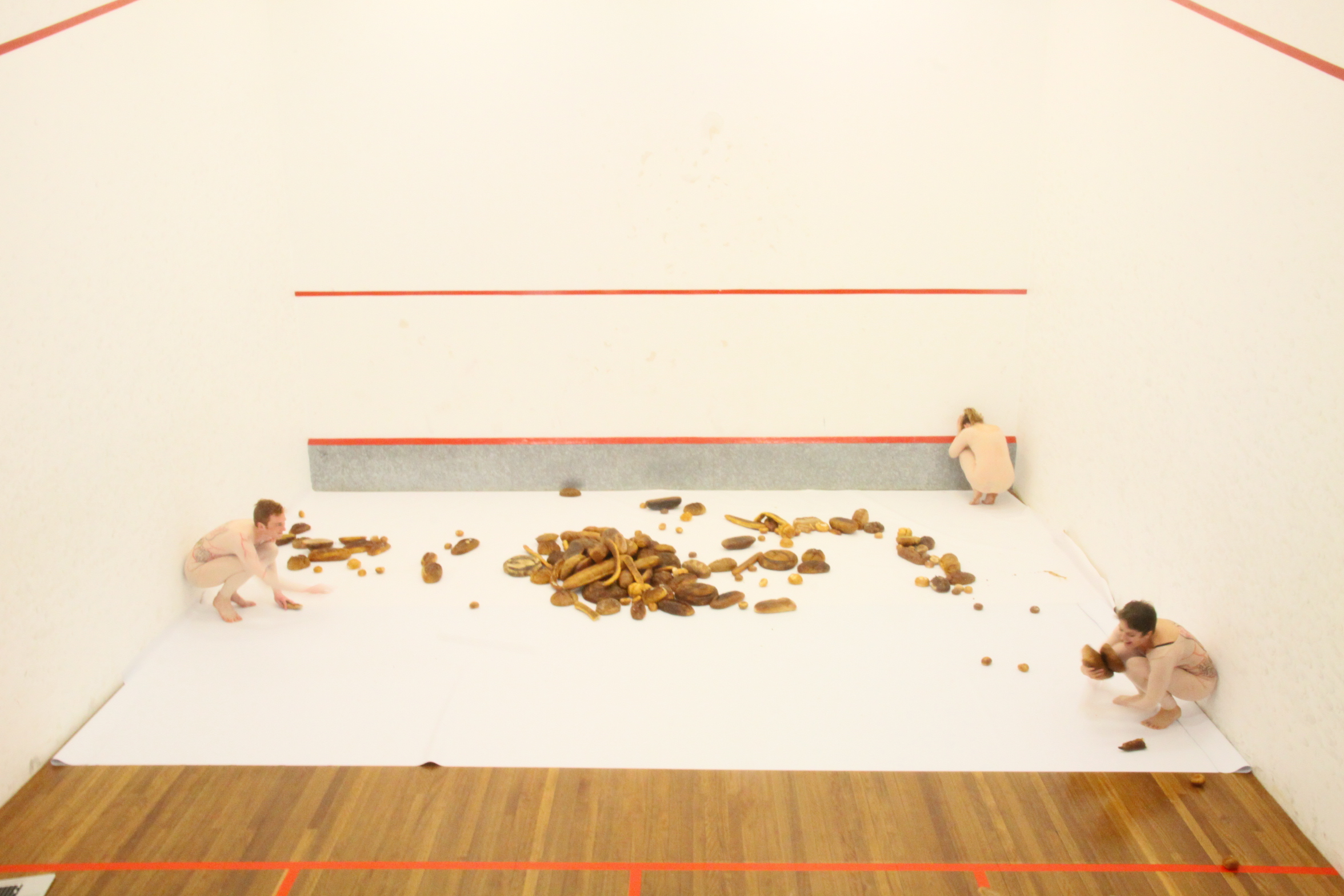
Strindberg’s ‘Creditors’ had appealed to me since my first reading in a set of pre-inferno translations by Walter Johnson. It came to my attention that the David Grieg translation, as staged by Alan Rickman had received acclaim internationally, but I was still drawn to Johnson, which I felt was a more balanced, ambiguous, and language-rich.
Going through early diaries, I think I noted the play as feeling like particularly brutal Ibsen, and though Strindberg’s ‘misogyny’ was famous, I liked that took gender and marriage as the obvious, a departure point and depicted these intense creatures just verbally sparring.
With three characters, and only two onstage at once, there was a real obvious slant to a sporting climate. I didn’t think that I would be contributing to the play by staging it in a theatre – why risk it verging on trying to be universal sentiment through the proscenium microcosm? I wanted the language to carry harsh echo, making the text a little masked and almost emerging at times with quasi-epigrams, so I first wanted to stage it in a changeroom of a swimming pool, a modern-day temple of sorts with layers of immersion and the audience seated on the bench perimeter with chlorine and concrete seeping.
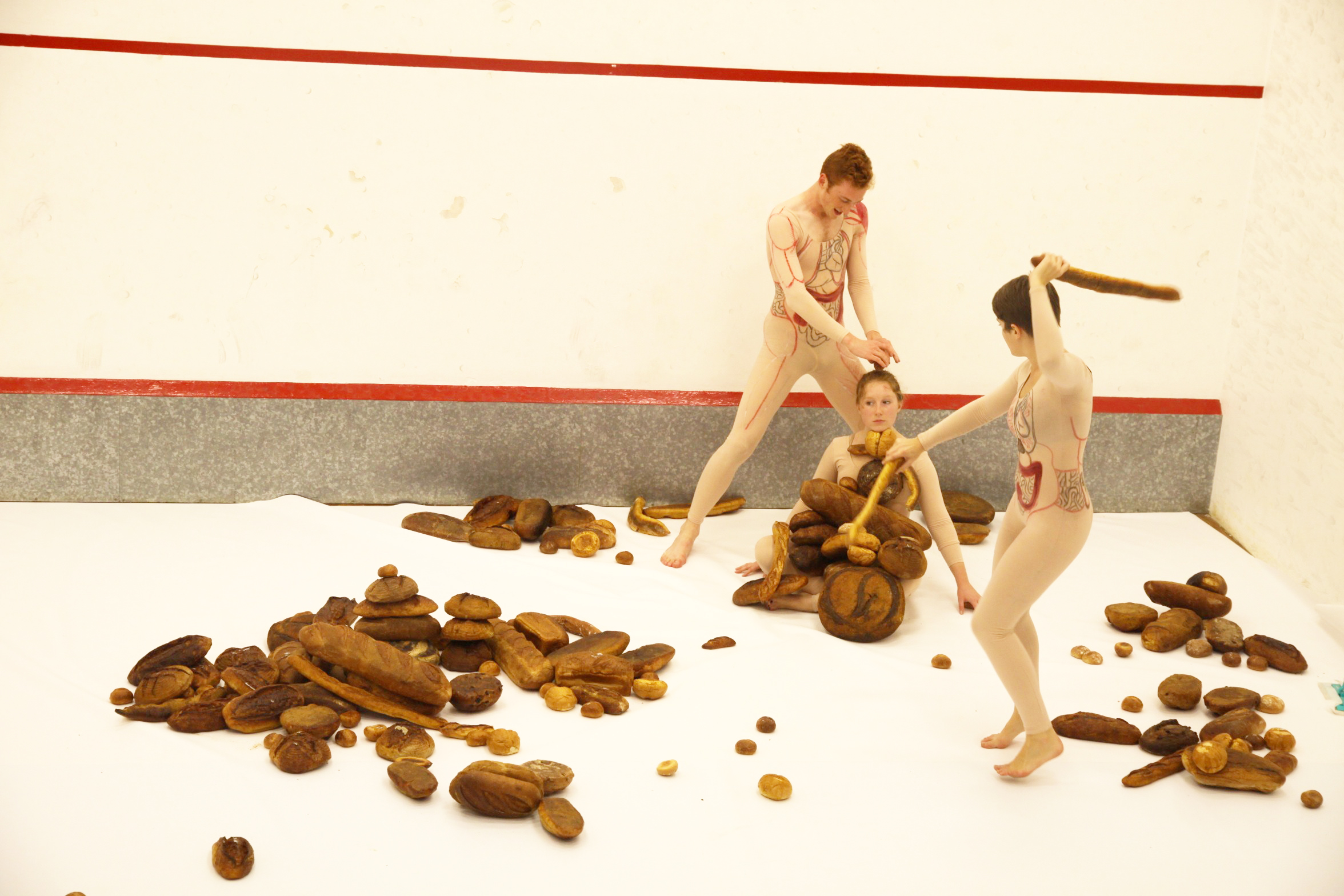
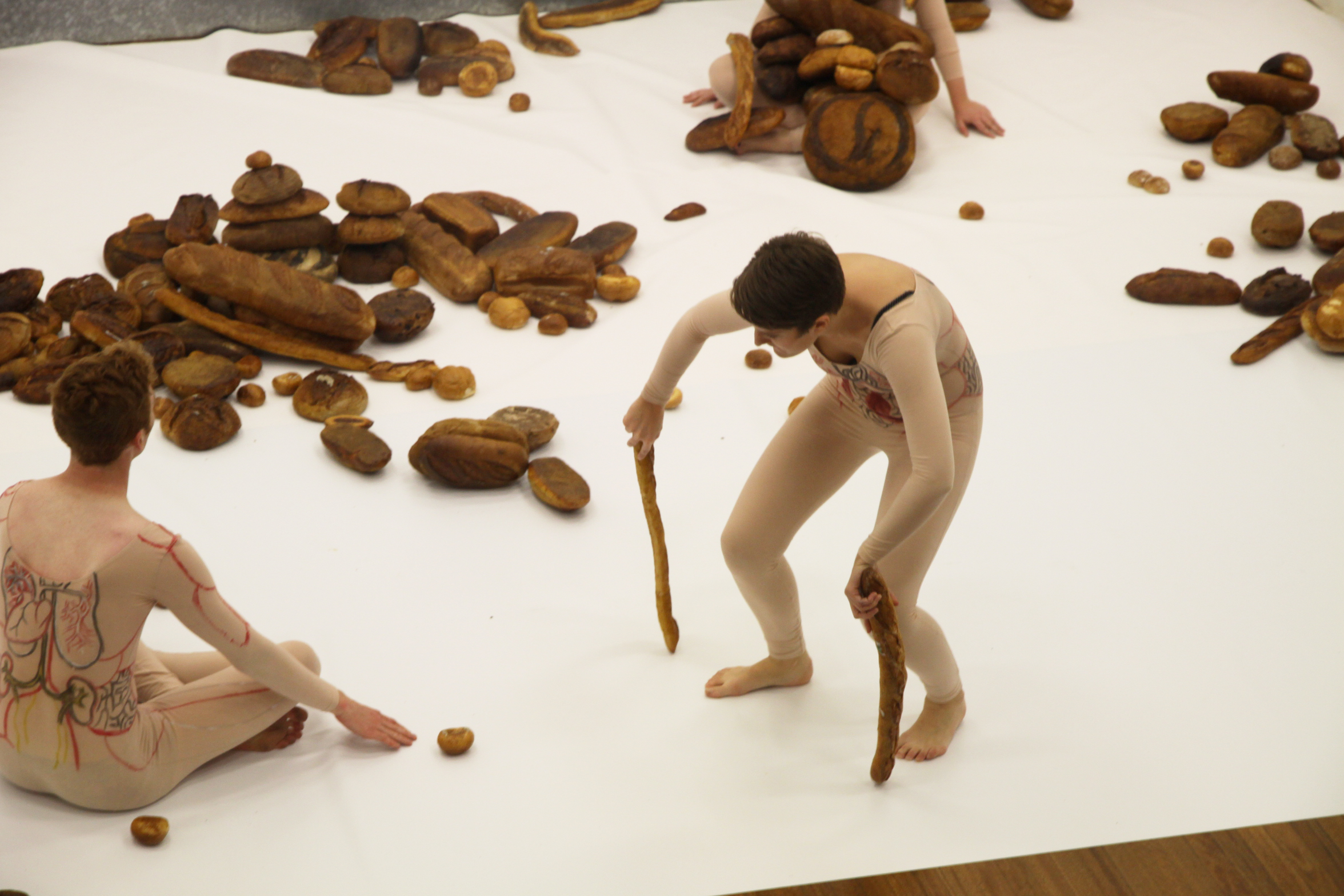
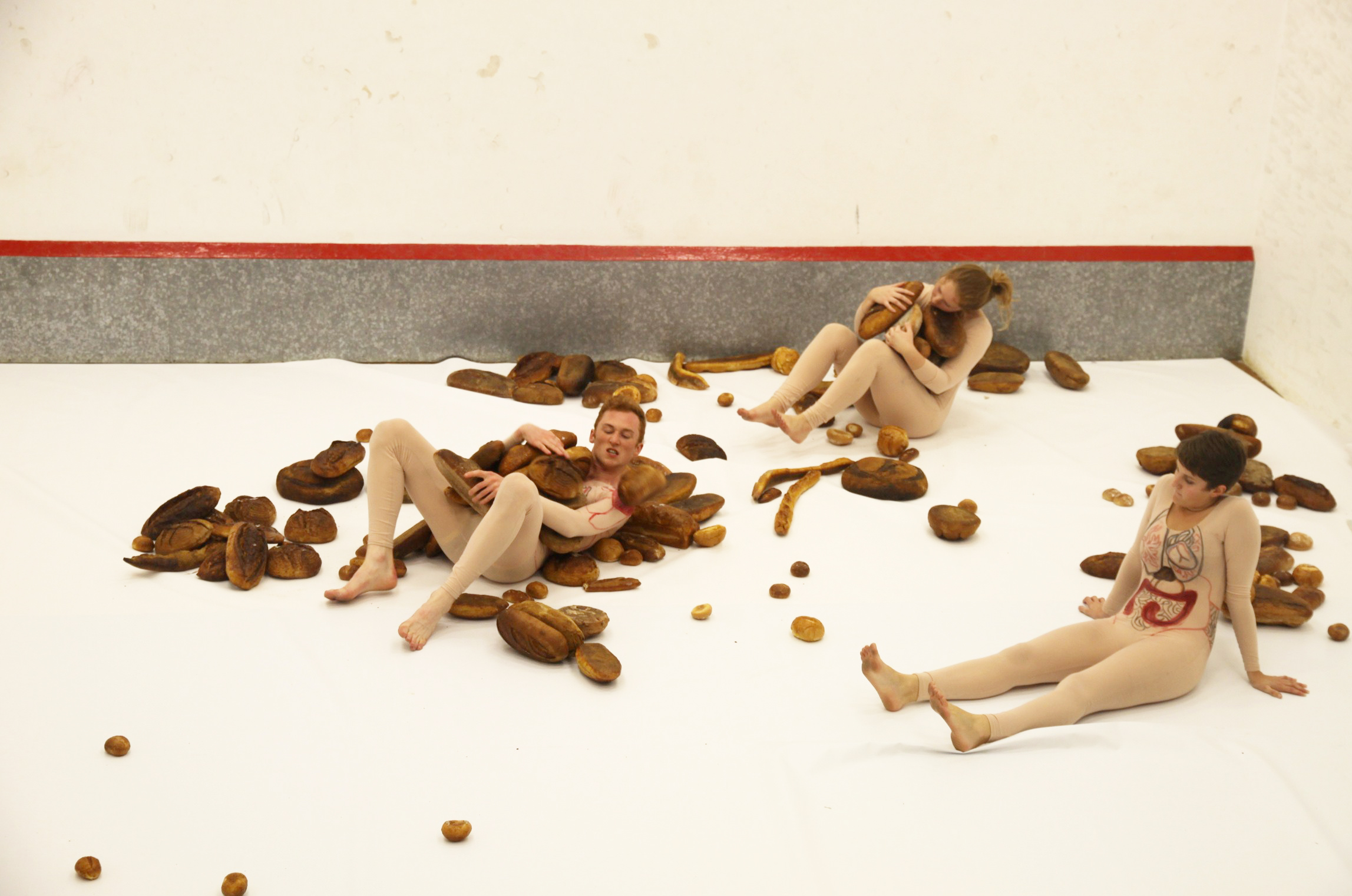
Insurance and availability wise, this was not viable, and instead I worked with this cavernous ideal of high ceiling and post-sweat white box clinicism. It had the reverberation i craved and space for audience.
The way I initially conceived the set was using preserved loaves as bricks of sorts, dowelling and reinforcing as furniture and then in a ring around the space a chain of toasters that’d be continually toasting sliced bread. With support from Bourke Street Bakery and Sonoma, I had really beautiful loaves which were handshaped and varied – to assemble platforms and furniture would prove non-aesthetic and impractical, so the shellaced bread became a larger encompassing installation of sorts -quite a brittle, pebble-like presence in the space which gave a necessary lightness (but possibly unnecessary discomfort) to actors.
We tried working with toasters in the space, but actor controlled appliances became almost like a cheating, easy discipline to immediately heighten tension, what with billowing smoke and jagged knife strokes in the loaves. I didn’t want to chain up action in the space by ritualising the toasters, as it was always supposed to just be a motion that wove in and out of the action rather than the action itself, so it became a device that I controlled from the rear of the space, letting a cloud of burnt toast smell fall over the whole space.
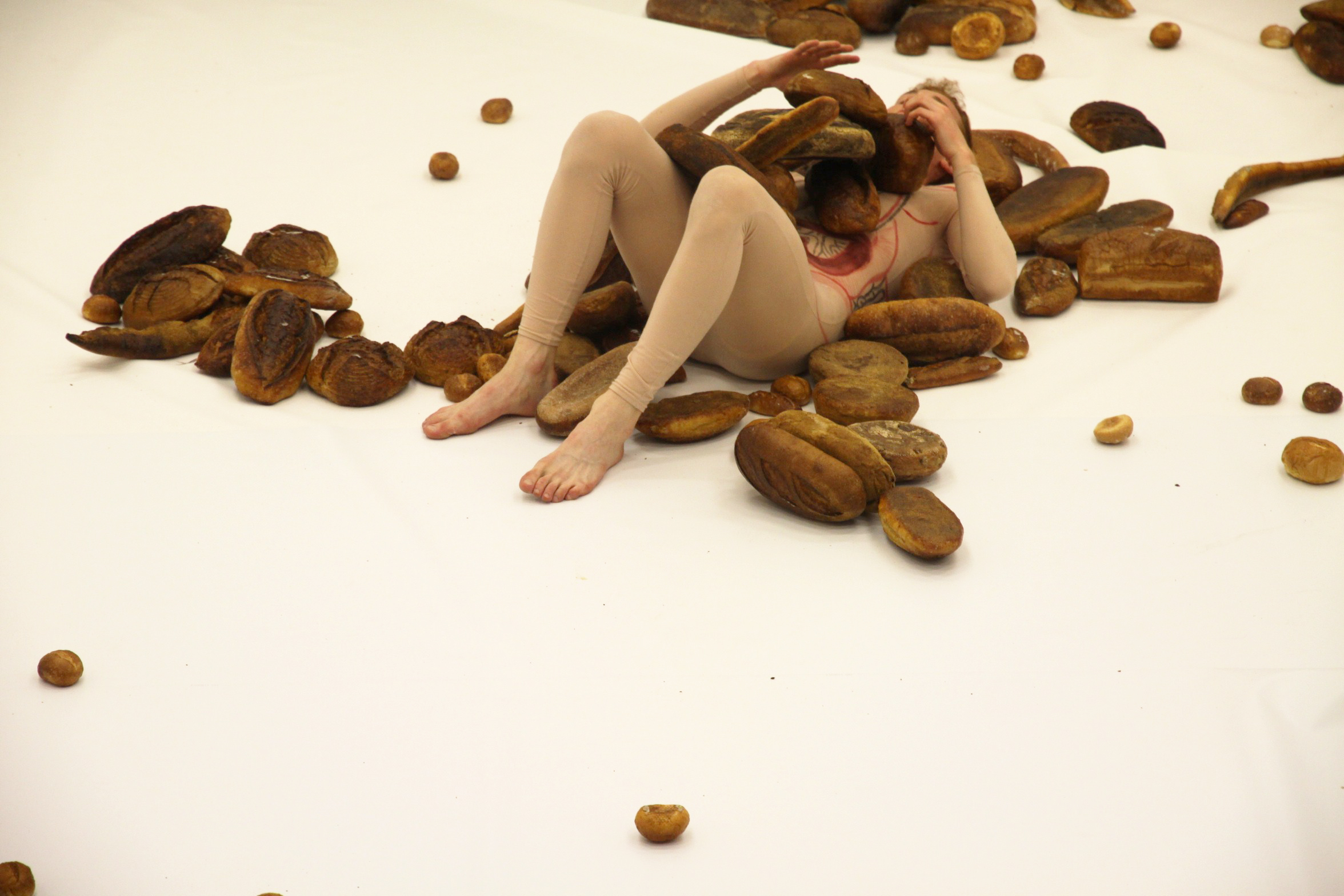
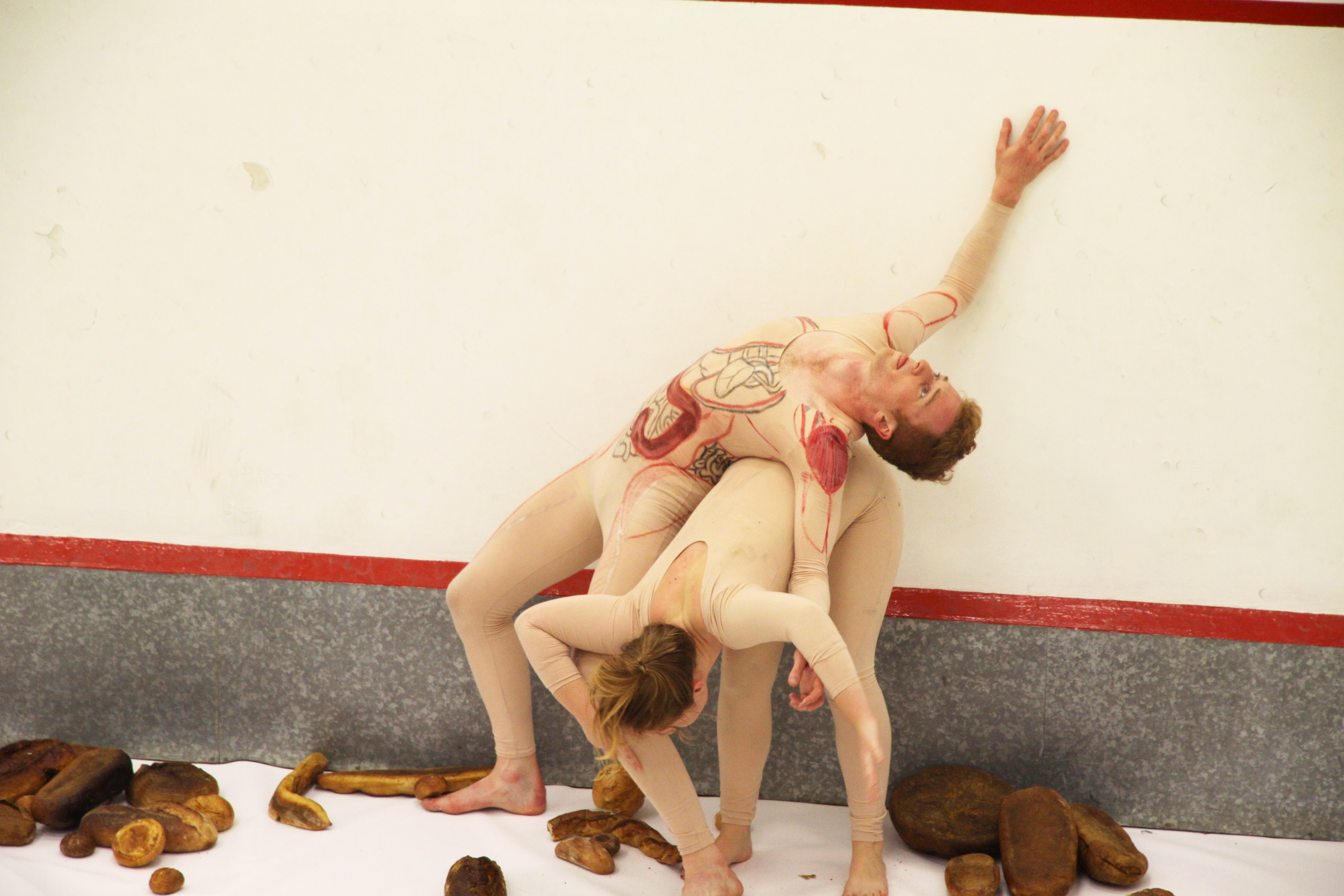
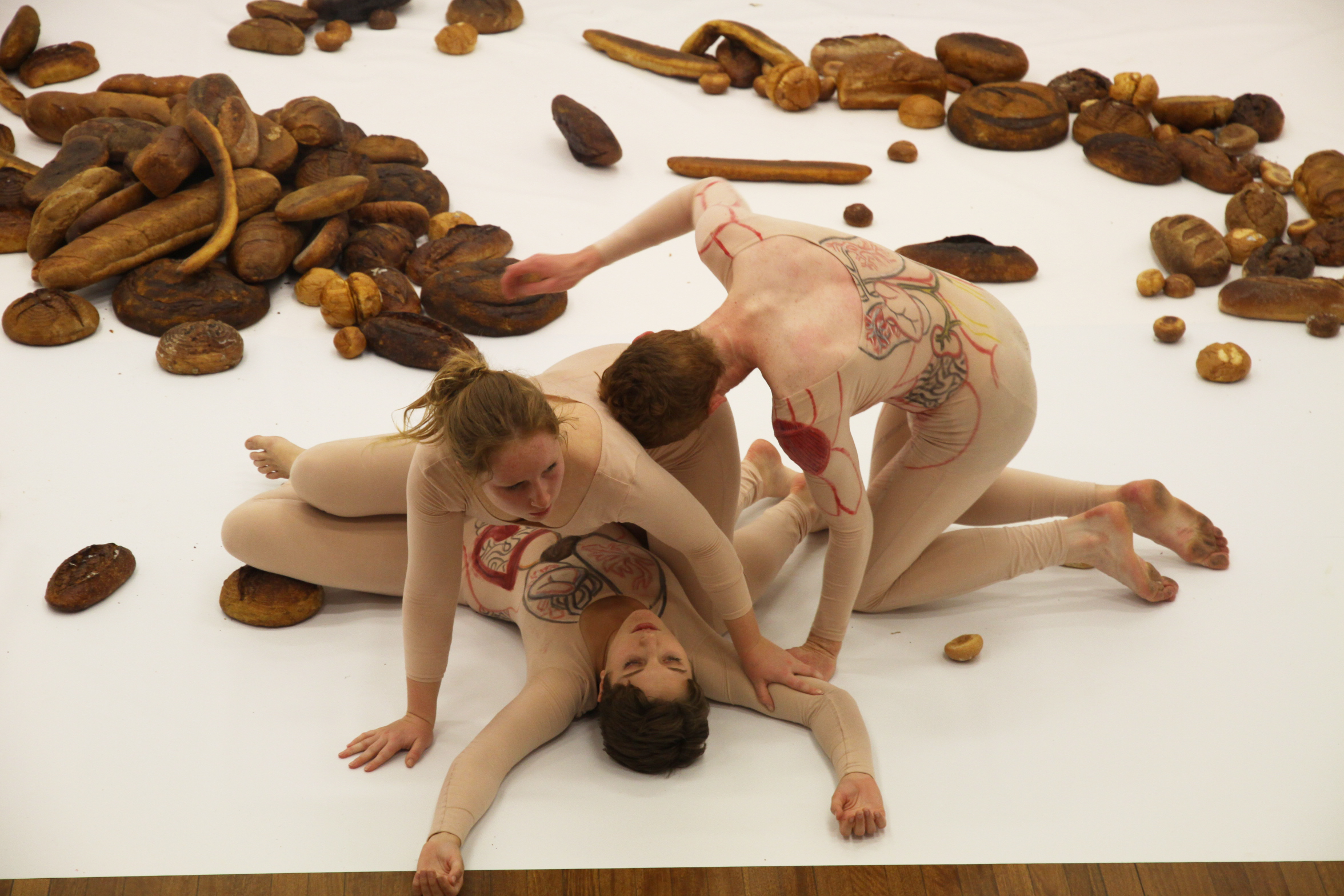
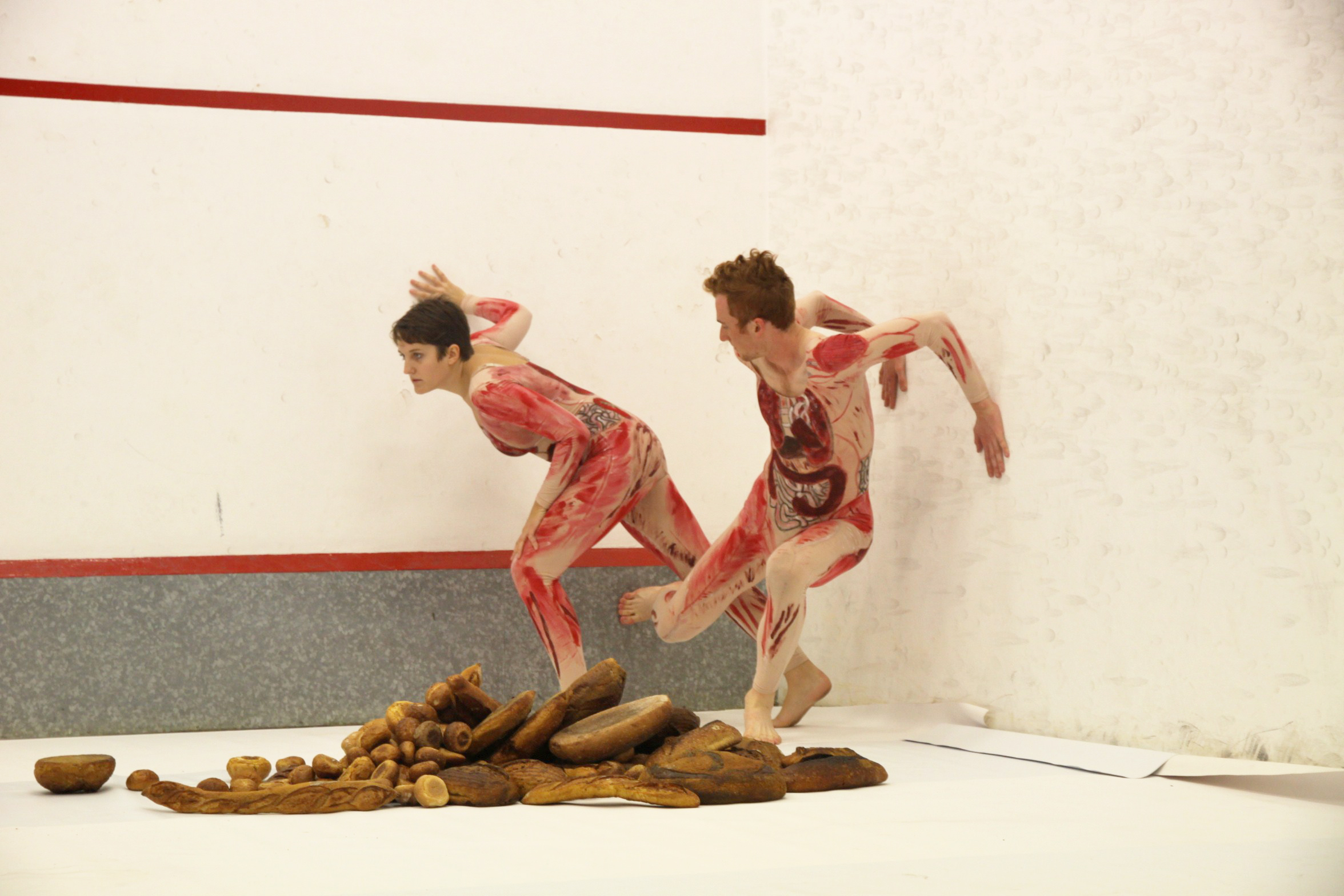
I was astounded by the completeness text and was keen to respect it and not butcher sections – the more ‘laboured’ repetitive sections were to act as intensifiers, a kind of audience bludgeoning, a little subversive etc. I was interested in different modes of communication though – the subtext, I guess, and wanted to experiment with physically depicting a different arc to the explicit text.
I am indebted to the fine actors I worked with – Harriet Gordon-Anderson, Eleni Schumacher, and Stephen Sharpe.
More on the choice of bread and rehearsal process in program notes below.
IVAN CHENG
Director
I first read this play in a San Francisco residence in a house filled with echoes of French forty-somethings dancing to Prince and Talking Heads, balloons, bowls of custard pastry scattered. What struck me about this play as the sun rose was the correct, majestic completeness of it.
Autobiographical in content, the misogynist Strindberg has crafted this work where the whole text is necessary but sickeningly excessive – to watch this text lift itself to the stage swung me between the ecstasy of stunning, honest work from the actors, and agony of harrowing words, endless plays to strip the others of belief and strength.
When the process began, I was driven to the idea that the text was about something more important than gender, than discussing marriage and relationship. I thought it was about the ache, the impossibility of withdrawing intellectual and physical gifts you had given, using a shiv to wedge doors shut, a jack-hammer to enamel windows, but now, as our season is about the commence, I feel it is about the tyranny of communication.
What are they saying, what do they mean to say, what are they trying to say, why are they saying that in that way, and then their bodies, physicalising that ambiguity of twisting dialogue, petty at surface and then proud. The actors are dressed in unitards, all organs and haphazard muscle slather, breathing and exposed but not revealing anything. Surrounded by hand shaped loaves, protected and coloured by shellac, it is an impassive, foreign staple in this competitive arena, a product of artisan moulding; baking and firing something that was plastic, punched down, rising, gashes.
The images of the show were always instinctive and clear from the beginning of the process – the challenge was its realisation. We began with quick script acclimatization before I tried to prescribe an abstract choreography line by line. Pleads of ‘I’m not a dancer!!!’ resounded, so we started to dissect text, as actors love to do. I’m very interested in the impenetrable, in instinctive understanding without justification and no clear bridges, so tried to discipline the actors so that the physical aspects worked as a separate arc to the spoken, naturalistic presentation of text.
Leading them through mental and physical frames of being was one of the most thrilling aspects of directing, trying to empower them to be aware of action and impulse. Having found this ephemeral ‘vocab’, I was then very keen to empower them to have play throughout the whole show, freedom and release from tyranny of text (lines down by July 22!). What you see now begins with frameworks and devised safety nets of impulse so that ‘default’ is no longer grandstanding and chatting, rather more charged and image-slamming, the energy of contemporary dance theatre.
I hope that you’ll find this show beautiful, and identify a form of expression that should have no bounds but perhaps does.
Thankyou to my brave and fantastic cast for their trust and their gorgeous, generous work in rehearsals. Cheers to Bourke St Bakery and Sonoma for their contributions, Denise Clark at the University of Washington Press, Russell Fitzgibbon and Deb Hartstein for their work on posters, anatomy whiz James Wilson for his work on costumes, our kind-faced producer Camilo Lascano, Tom Walker and Harriet Gillies at Verge, Liz Toriola and SUDS for their support, Pierce Wilcox, Dom Mercer, Laura Bannister, and Paul Reynolds.
STEPHEN SHARPE
Gustav
Here lies a sea of doubting duplicitous love and stormy revenge, navigated with unease by crippled characters that remain ever weary of the play’s periphery, where snags of repressed violence and spectres of lost children are littered. For us, this hesitant and withholding text has been more than a challenge to map, contradiction, confusion and mystery still abound, and I’m not entirely convinced that it isn’t just a nightmare. And even then I can’t be sure whose nightmare it is.
Additional layers of exposed organs, breadcrumbs and physical impulse, installed in such an energetic echo chamber, have complicated the conventional styles of performance my body wants to cling to. Here, a new language is required, and I’ve been feverishly trying to step up to the plate, or whatever you approach to play an all-star game of squash.
The resulting performance feels a lot like being tied up in a black bag with the other actors and occasionally kicking or being kicked. I have the lacquered-hard bread bruises to prove it. This has been an exciting course of learning to embrace frustration, anxiety and uncertainty.
HARRIET GORDON-ANDERSON
Adolf
“This is part of modern acting. It is not solvable. It’s not just an orange. It has a little to do with an orange but also something to do with sex.”
– Stella Adler on August Strindberg.
So much of what I have to say about this play and the experience of performing it begins with ‘I don’t know’. There is comfort in certitude and habits of knowing, but this is not a comfortable play. The circles these lovers carve for themselves are duplicitous and impassioned but they only double back on themselves, and tracing them has been an exercise in sensory, rather than cerebral navigation. If anything, this production that is so visually stunning has pushed me to rely less and less on my eyes for direction. With any luck each performance this week will be different, as the cast force ourselves out of habit and muscle-memory and into instinct, struggle-snuggling without direction or resolve.
ELENI SCHUMACHER
Tekla
This process has occasionally made me laugh, sometimes made me cry, and often made me nauseous. I think that nausea comes with the realisation, through explor-ation of such meandering, embittered altercations, that we are all relentlessly confused and changeable beings.
For me, nausea comes from anxiety, and for Tekla, this anxiety sprouts from the constant struggle to love and be loved. She battles with it, she misdiagnoses and mistreats herself, makes her own sickness worse, contracts it to others, then performs unhygienic surgery on them with blunt and rusty instruments. She then sits in a waiting room and hopes they need someone to feed them soup during recovery, all the while wondering why she feels nauseous about all this.
This process has been at once frustrating and liberating. In being given absolute agency to move whenever and however I want, I have found myself rooted to the spot by the actor’s inhibition that tells me the audience must understand precisely what’s going on beneath my skin. It took me a long time to realise that this play is riddled with uncertainty, dishonesty and misguided affection/disgust.
Exhibiting truth here would be a lie. In a universe that constantly seeks truth, accepting the loving embrace of confusion is a breath of fresh air. I hope you enjoy being confused with us.